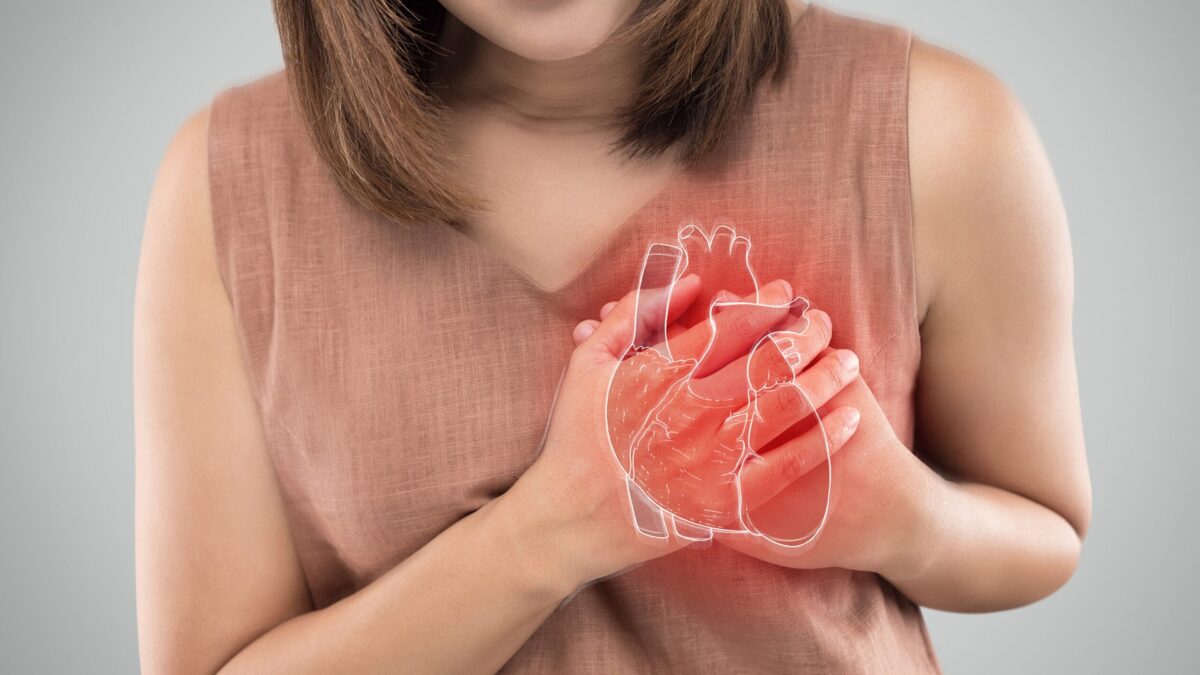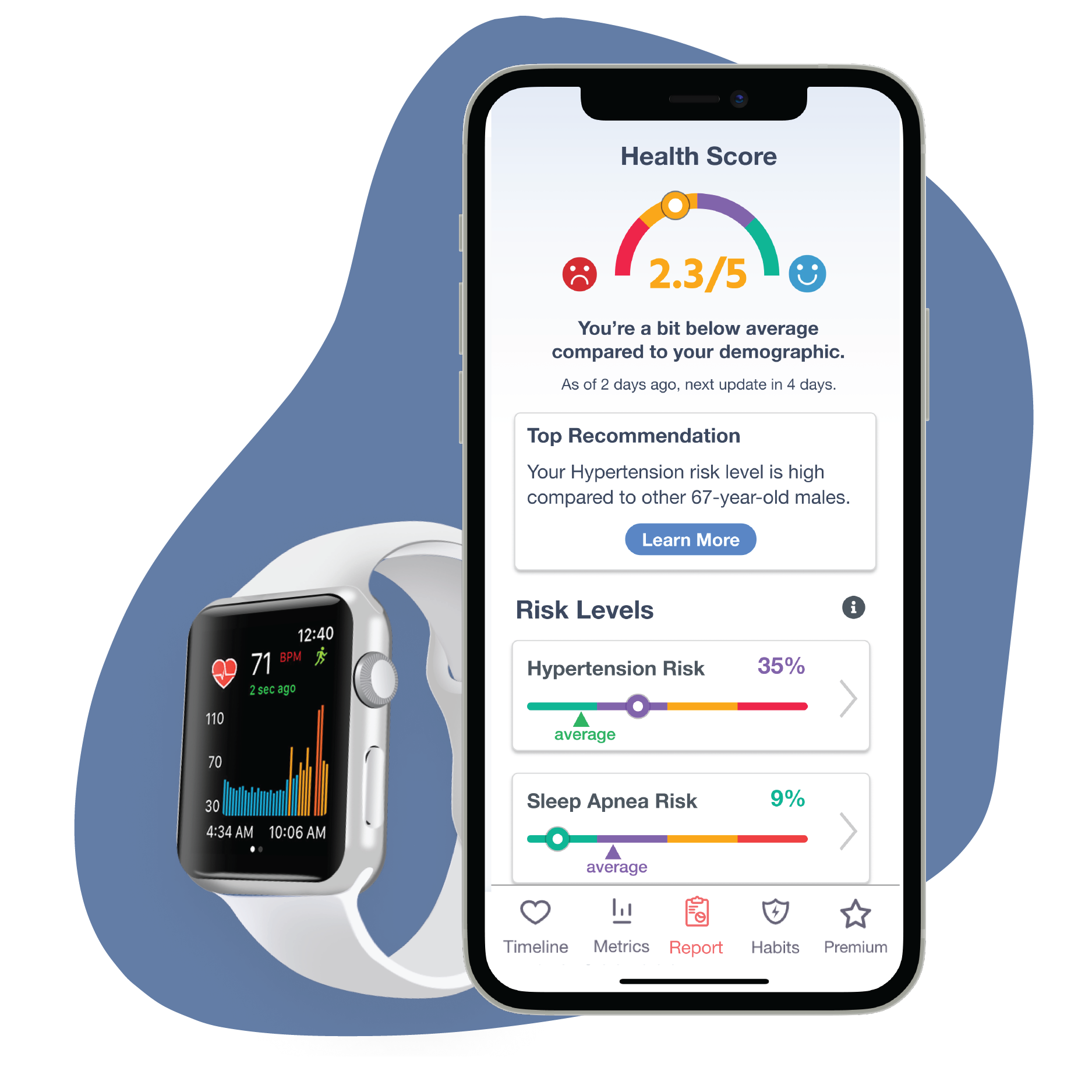While it’s often not thought of as such, heart disease is the leading cause of death in women in the United States.1 In fact, over 44% of women in the U.S. already have some form of it.2 (That’s around 60 million women.) However, since so many women are unaware of their risk for heart disease, they’re less likely to feel they have reason to take the same preventative measures as men. Which can mean they receive less early diagnosis and medical attention.
There are also challenges women face regarding their heart health that are unique to them. For instance, woman have certain symptoms and risk factors (such as hormone changes and pregnancy complications) that differ from men. Even so, there are plenty of ways women can become informed and take preventative action to reduce their risk and lead heart healthy lives.
Heart disease isn’t often considered to be a woman’s issue. However, women are indeed just as affected by it as men are. In fact, more women are killed by heart disease every year than all forms of cancer combined.3
Not only that, but women have several risk factors that make them even more susceptible to heart disease than men. Risk factors that are unique to (or more characteristic in) women include:
- Hormonal changes during menopause
- Complications during pregnancy
- Autoimmune disorders (i.e., lupus, rheumatoid arthritis)
Moreover, women’s heart disease symptoms can also vary from men. Without this knowledge, it can be harder to diagnose heart disease in women. For instance, women can have symptoms such as:
- Nausea
- Fatigue
- Back pain
Because of this, it’s important- vital, even- to educated yourself regarding these differing factors. And to take action if you consistently have these symptoms.

Recognizing symptoms of heart disease in women
Taking proactive measures is, of course, the best way to go about maintaining optimal heart health and reducing risk of heart disease. However, when heart disease is present, it’s important to catch it in its early stages. To do so, someone has to be able to recognize the symptoms. (Especially since they could differ from men.)
Here are some of the most common symptoms, and how to spot them:4
Chest pain. For both men and women, chest pain or discomfort is the most common symptom of heart disease. It can feel like a squeezing, pressure, tightness, or general pain in the chest area. The sensation can be constant, or it can come and go.
Arrhythmias. Heart disease could cause arrhythmias, or abnormal heart rate patters. This can include a heart rate that is too fast, too slow, or that shows inconsistencies. This can sometimes be felt, but it’s best to use your Cardiogram app to monitor for these abnormalities.
Shortness of breath. Women who have heart disease may find it challenging to breath. This can be triggered by even simple activities, like walking or going up the stairs.
Nausea or vomiting. Heart disease in women may also cause nausea or vomiting. This is especially true when it’s accompanied with other symptoms.
Fatigue. Uncharacteristic levels of fatigue or exhaustion, especially when it’s not relieved by rest, could be a symptom of heart disease in women.
Back pain. Back pain is one of the less common symptoms, but it can occur. It’s likely due to an underlying issue with the blood vessels that supply the heart, or when the heart muscle itself is damaged. This back pain can feel like a dull ache, lingering pressure, or a sharp pain in the upper back or between the shoulder blades. This pain can also radiate into the jaw or neck.
Sweating. This can be experienced as feeling clammy or breaking out in a cold sweat for no obvious reason.
Dizziness. Feeling lightheaded or faint, as well as noticing a reduction in balance and coordination, are possible signs of heart disease.
It’s also important to note that in certain cases, women with heart disease have no symptoms at all. And that even when symptoms do arise, they can vary in consistency and their level of severity.
Because of this, it’s recommended that you have regular check-ups and work closely with your doctor to keep an eye on your heart health. And, if you do notice symptoms, no matter how subtle, be sure not to ignore them. Rather, speak with a healthcare provider and seek medical attention immediately. (Better safe than sorry.)
Thankfully, lots can be done to lower risk of heart disease in order to prevent it from occurring in the first place. Some examples of ways to lead a heart healthier life include:
- Exercising regularly
- Maintaining a healthy weight
- Eating a heart-healthy diet (like veggies, nuts, and fiber)5
- Quitting smoking
- Lowering stress levels
- Getting good sleep
- Managing chronic conditions
Taking these steps can help women to improve their overall heart health, and consequently reduce their risk of developing heart disease.
Tagging Symptoms
Tracking Symptoms
Whenever you experience recurring symptoms, be sure to hit the “add symptoms” button on your Cardiogram app. This will help you to keep track of your symptoms, and allow your doctor to gauge the frequency and severity of your condition for a more accurate diagnosis. Remember, you can always add your own custom symptoms if you experience symptoms not listed.
Journaling
By taking notes when symptoms arise, or of certain events and activities throughout the day, you and your doctor will be at an advantage, able to connect otherwise seemingly unrelated circumstances.
Share data with your doctor
Enroll in a habit
Join our facebook community
- https://www.cdc.gov/heartdisease/facts.htm
- https://www.cdc.gov/heartdisease/women.htm
- https://www.heart.org/en/health-topics/heart-disease-in-women
- https://www.nhlbi.nih.gov/health-topics/heart-disease-women/what-are-symptoms-heart-disease-women
- https://www.health.harvard.edu/womens-health/women-and-heart-disease-key-facts-to-know



